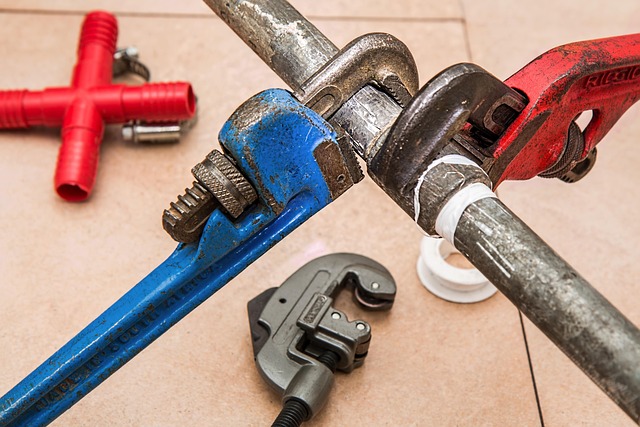Frozen pipes can cause substantial damage, so prevention is key during colder months. To avoid them, insulate exposed pipes, use heat sources like heat traces or space heaters in vulnerable areas, check for leaks and wear and tear regularly, and maintain proper ventilation. These strategies ensure smooth water flow and protect your home from frozen pipes all winter, making it easier to handle unexpected cold weather.
Frozen pipes aren’t just an inconvenience—they can cause severe damage to your home, leading to costly repairs. Understanding the impact of frozen pipes is the first step towards prevention. This article delves into the common causes and risk factors behind these winter woes, offering effective strategies for both prevention and maintenance. Learn how to protect your pipes from freezing and avoid unexpected disasters with these essential tips on How to Prevent Frozen Pipes.
- Understanding the Impact of Frozen Pipes
- Common Causes and Risk Factors
- Effective Strategies for Prevention and Maintenance
Understanding the Impact of Frozen Pipes

Frozen pipes aren’t just an inconvenience; they can cause significant damage to your home and lead to costly repairs. When water freezes within plumbing systems, it expands, putting immense pressure on pipes, fittings, and appliances. This can result in burst pipes, leading to flooding and potential structural damage. Moreover, the freezing process itself can cause pipes to crack or corrosion over time, further compromising their integrity. Understanding these impacts is crucial for homeowners to grasp why preventing frozen pipes should be a top priority during colder months.
Knowing how to prevent frozen pipes is essential. This includes isolating water supplies to vulnerable areas, such as outdoor spigots and exposed pipes in attics or crawl spaces. Insulating pipes with protective materials like foam helps maintain a consistent temperature. Additionally, keeping heat sources nearby, like baseboard heaters or electric blankets wrapped around pipes, can provide much-needed warmth. Regular maintenance, including fixing leaks and improving ventilation, also plays a vital role in stopping frozen pipes from becoming a recurring problem.
Common Causes and Risk Factors

Frozen pipes are a common wintertime nuisance, but their impacts can be far more severe than a simple plumbing inconvenience. Several factors contribute to this issue, and understanding them is the first step in preventing frozen pipes. One of the primary causes is temperature drops below freezing point, especially in areas where pipes are exposed or not adequately insulated. This sudden cold triggers water inside the pipes to freeze, expanding as it does so and putting immense pressure on the pipe’s structure.
Other risk factors include poor plumbing design or installation, such as pipes running close to exterior walls or through uninsulated spaces. Old or damaged pipes are also more susceptible. Additionally, certain materials like metal expand and contract with temperature changes, increasing the likelihood of freezing. How to prevent frozen pipes? Proper insulation, especially in vulnerable areas, is key. Consider using heat tape or thermostatically controlled heat circuits to maintain a consistent temperature. Regular maintenance and checking for any leaks or damage are also essential measures to take.
Effective Strategies for Prevention and Maintenance

Frozen pipes aren’t just an inconvenience; they can lead to serious damage and costly repairs. To prevent this winter woe, a proactive approach is key. Start by insulating exposed pipes in your home, especially in areas prone to temperature drops below freezing. This simple step creates a protective barrier against the cold, keeping water flowing smoothly. Regular maintenance is equally vital; check for any leaks or signs of wear and tear, fixing them promptly to avoid water damage from burst pipes.
Consider implementing a heat source near your pipes, like a heat trace or a space heater, in particularly vulnerable areas. This ensures constant warmth, deterring the formation of ice. Additionally, keep your garage door closed when temperatures dip low, preventing cold air from entering and putting pipes at risk. By adopting these effective strategies for prevention and maintenance, you can protect your home from frozen pipes all winter long.
Frozen pipes aren’t just an annoyance; they can cause significant damage to homes and lead to costly repairs. Understanding the common causes and implementing effective prevention strategies is crucial for safeguarding your property. By taking proactive measures, such as proper insulation, maintaining heat in extreme conditions, and regularly checking vulnerable areas, you can avoid the hassle and financial strain of frozen pipes. Remember, a little preparation goes a long way in keeping your home safe from this winter dilemma. To prevent frozen pipes, focus on these key areas: insulate exposed pipes, maintain consistent heat, and address leaks promptly.
